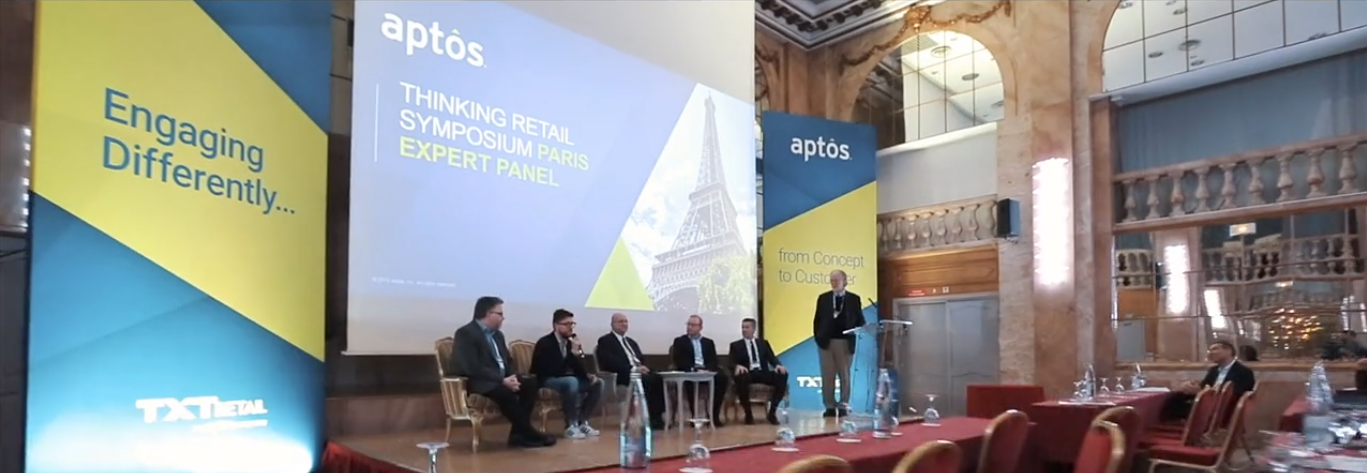
What's the Buzz? Planning and Supply Chain Trends from Paris to New York
We recently held our annual Thinking Retail Symposiums in Paris and New York. Over 175 executives from some of the world's leading retailers and brands gathered to discuss issues and opportunities facing their planning and supply chain operations.
These Thinking Retail Symposiums represent unique opportunities for merchandise planning and supply chain professionals to get together, listen to their peers and industry experts, and exchange concepts and ideas in a venue where even competitors feel comfortable interacting and brainstorming. One of the highlights of the events is the "expert panels," both of which were moderated this year by Brian Kilcourse, Managing Partner of Retail Systems Research (RSR).
RELATED: Meanwhile, in Paris, a blog post by Brian Kilcourse of RSR.
Participants in the Paris session included REI, Moncler and AW Lab (part of Bata Group), while REI together with Finish Line, Urban Outfitters, Boston Retail Partners and Columbus Consulting composed the expert panel in NYC. While a variety of topics were covered, here is what I found to be the most pressing and impactful trends and strategies discussed by event attendees:
Of course we leverage customer data to build assortments ... doesn't everyone?
Well, actually no, not everyone does. In fact, most companies thought they could improve their ability to leverage customer data to build assortments. The three areas below were cited as the greatest obstacles to overcome to leverage customer data during the creation of their collections:
- Several reported having minimal organized sources for customer data.
- Others reported that they do in fact have huge stores of customer data, but they have no great way to organize and mine its value.
- Still others reported the more perplexing problem of "marketing may have customer data, but we can't find a good way to leverage it to make better merchandising and planning decisions."
Add in the possibility of tapping social data (which many attendees were interested in), and it would seem that there are a lot of "dots," but not a lot of connections between the dots as of yet.
Omni-channel is dead ... long live seamless commerce.
There was overall consensus that while the news is still replete with mentions of omni-channel, the customer really doesn't care. Shoppers embark upon journeys that may – or may not – involve all the channels, as their needs and preferences dictate. Shoppers look at the retailer as a single entity, and could care less how complex it may be for the retailer to deal with the difficulties of the various combinations of shop online, buy somewhere, pick up elsewhere, deliver from yet another location, all on the same day. And of course, it might be nice if home pick up was available for ease of return.
The burden is clearly on retailers – and their technology partners – to find ways to meet their expectations for relevant and localized assortments that are available when, where and how they choose to shop.
Those Millennials: Can't live with them, can't live without 'em.
Do the new generation of Millennial merchandisers, who got their first computer at 5, and wrote their first program at 6, make great allocators? Retail, famous for lowering expenses with great gusto, doesn't seem to be big on increasing headcounts, but worse, even with open headcount, participants told us that it's not easy to get good help, as the expression goes. Finding talented new team members is hard enough, but many attendees told us that getting those really bright minds to stick with jobs like planning and allocating is even harder. (Perhaps, our next version of TXT Planning should come with a joy stick?!)
The panelists strongly agreed on one thing.
Despite many disparate challenges and some differing opinions on the solutions to those challenges, the panelists were aligned in their belief that retail is not in the middle of an apocalypse, but rather a shopper-driven transformation. They believe we are in the midst of a Retail Renaissance.
RELATED: Check out my Retail Renaissance blog post from last year for what may be the first use of that phrase in the industry).
While change is not for the faint of heart, all agreed that there never has been a more exciting time for retailers, or a greater opportunity for success for those who grab the opportunities and embrace change.



